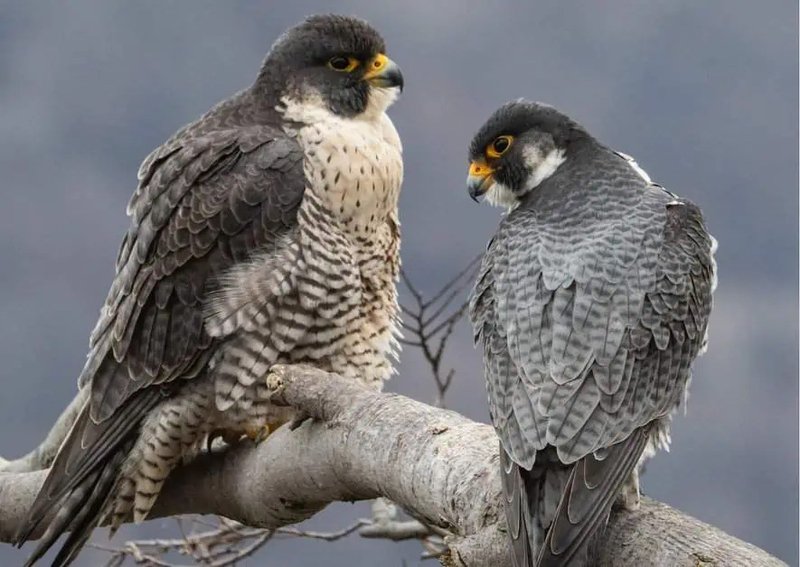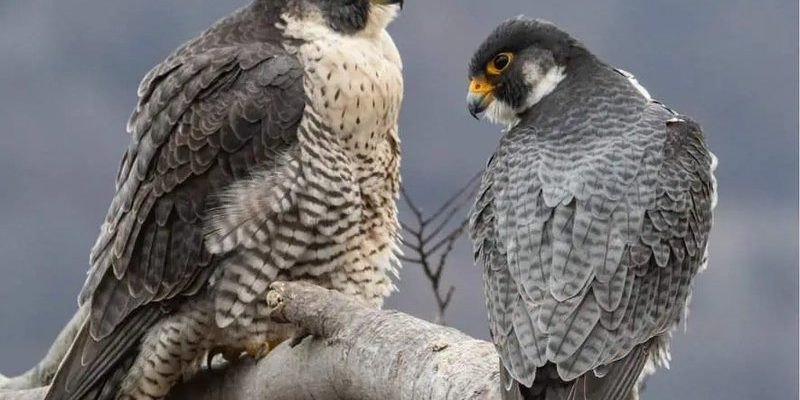
To understand their intelligence, we need to dive into their behaviors and cognitive abilities. From their astounding visual acuity to their strategic hunting techniques, the peregrine falcon showcases a variety of skills that demonstrate its brainpower. Think of them as nature’s very own superheroes—with unique powers that help them conquer the sky. So, let’s unpack what makes these birds tick and explore their remarkable intelligence!
The Visual Superpower of the Peregrine Falcon
One of the first things you might notice about peregrine falcons is their incredible eyesight. They can spot prey from over a mile away! This ability is essential for their hunting strategy, which relies heavily on keen eyesight. Imagine having a pair of binoculars built right into your head, allowing you to see details clearly from afar.
Their eyesight is estimated to be about eight times better than that of humans, allowing them to detect even the slightest movements. This means they can pick up on potential meals, like other birds, swooping down effortlessly. But it’s not just about spotting prey; it’s also about tracking movements in the sky. This skill is crucial for timing their dives—more on that shortly!
When they spot their target, their brains process visual information rapidly, enabling them to make quick decisions. You might wonder how this is possible. Well, it all boils down to their large optic lobes, which are the parts of the brain responsible for processing visual data. This structural adaptation plays a monumental role in their intelligence and hunting prowess.
Hunting Strategies: Brain Meets Brawn
Peregrine falcons are known for their extraordinary hunting techniques. Their method often involves a dramatic dive, called a stoop, where they can reach speeds of over 240 miles per hour. It’s like a high-speed chase, where planning and precision come into play. But what’s fascinating is how they use their intelligence to set up these incredible hunting feats.
During a hunt, a peregrine will often observe its surroundings first. This helps them identify patterns in the behaviors of other birds. For example, if they notice a group of pigeons feeding, they’ll wait patiently, blending into the environment. It’s a mix of stealth and timing—like a game of chess in the sky.
Once they’re ready to strike, their keen eyesight and incredible speed come together. They can calculate the distance to their prey and adjust their flight path accordingly. This intelligent calculation separates them from many other birds. Rather than just relying on speed, they combine their knowledge of the terrain, the behavior of other birds, and their own physical capabilities.
Social Behavior and Problem-Solving Skills
While peregrine falcons are often seen as solitary hunters, they are also capable of social interactions, especially during breeding season. They display complex courtship behaviors, which demonstrate their ability to communicate and bond with potential mates. This social aspect of their lives reflects another layer of their intelligence.
Peregrine falcons have been observed engaging in playful behaviors with each other. They might chase one another or engage in aerial acrobatics—showing that they aren’t just all about business. This play can help with honing their skills and building social ties.
You might find it interesting that these birds can also display remarkable problem-solving skills. In various studies, researchers have observed them figuring out how to access food or navigate obstacles in their environments. For instance, if they encounter a human-made structure, they often adjust their hunting strategies accordingly. It’s like they’re mentally mapping their surroundings, showing a level of adaptability that’s quite impressive.
Learning from Experience: A Smart Bird’s Tale
Peregrine falcons are not just born smart; they also learn from their experiences. Young falcons often watch their parents as they hunt, absorbing valuable lessons about their environment. This imitation learning is crucial for their development. It’s similar to how a child learns to ride a bike by watching their parents first.
Once they start hunting on their own, they continue to refine their skills. If a young falcon fails in its first few attempts, it’s not a setback but a learning opportunity. They adjust their tactics based on what didn’t work—showing a level of self-awareness and cognitive processing that we often associate with more intelligent animals.
Interestingly, peregrines can also develop specific hunting techniques that work best for them. Some may prefer to hunt in open areas, while others might thrive in more populated settings. This ability to adapt their strategies based on their experiences showcases a high level of cognitive flexibility.
So, how smart is a peregrine falcon? Their intelligence is multi-faceted, combining incredible vision, strategic hunting techniques, social behaviors, and a capacity for learning and problem-solving. Understanding their cognitive abilities not only sheds light on their survival strategies but also emphasizes the importance of conserving their habitats.
By appreciating the ingenuity of these birds, we gain insight into the complexities of nature and the delicate balances within ecosystems. Peregrine falcons remind us that intelligence isn’t just about brain size; it’s also about adaptability and the ability to learn from one’s environment.
In a world that often overlooks the intelligence of wild creatures, the peregrine falcon stands out as a testament to the power of brains and brawn working harmoniously together. So, the next time you spot one soaring through the sky, take a moment to appreciate its remarkable mind at work!

